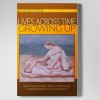Shevrin addresses one crucial aspect of the recent dissatisfactions within the American Psychoanalytic: training analysis. Click Here to Read:
He states a foundational problem clearly: organizations value power. Privileged knowledge (the intimate vulnerabilities of a candidate’s personal life) when combined with official power (overseeing promotion, graduation, certification, TA status) results in a highly combustible and potentially corruptible organization, prone to alienation, revolution/rebellion or compliant identification. This power imbalance also cramps psychoanalytic knowledge, which ails from frequent newfangled fads, rather than systematic, disciplined reevaluations and progression. The nature of appointing training analysts, he argues, who oversee both education and treatment, results in coteries of fawning acolytes, adverse power dynamics in Institutes and distortion of scientific progress. His words are strong. How can we rethink our dilemma? Moreso, is there something systematic in our profession that feeds this ailment?
Shevrin’s approach is to look at the common features of any organization or institution, an approach productively used by Weber and by Goffman in his genius work, Asylums.
Yet, while organizations share common features, they also have identities that differentiate one from the other: a university, a corporation, the Department of Motor Vehicles all are organizations, but have features that differentiate them, an aspect of their identities. To some degree, knowing an organization’s identity helps guide us to how it is structured, who its members are and their relationships to each other: the university’s identity is developing and transmitting knowledge; the corporation, generating income; the DMV, licensing cars and drivers.
Let’s narrow our focus to identity. Kernberg, Richards and others have written about the question of our overall identity as an organization. For Kernberg, he looks at the range of external models: university, trade school, artistic enterprise and so forth. For Richards and Lynch, they look both historically at how psychoanalysis has evolved and systemically at how we function as a thought collective, using ideas from the sociology of science.
To keep this column need be brief, let’s laser-like focus on a peculiar feature of our identity, the (training) analysis and its inherent binds.
There are two binds in a good enough analysis: both are challenges for the analyst, one centers on the analysand, the other on the analyst (but for the analysand’s well-being). For the analysand, we build a framework to facilitate regression and temporary dependence. Freud’s early techniques — reclining on the couch, free association and related primary processes — remain fundamental despite all the changes in theory. Winnicott elaborated the idea of a state of dependency to facilitate regression (at times this went awry with some followers). But, paradoxically, an ultimate, an optimal aim of psychoanalysis is to foster autonomy: in Western life, since the Enlightenment and political revolutions, autonomy — self-rule — is highly valued. Erik Fromm described the next step in true freedom: internal self-rule (and its attendant responsibilities) in Escape from Freedom. (R. Paul’s paper presented at the Chicago IPA makes this cultural distinction from some Eastern perspectives that emphasize reverence for authority.)
The Analyst’s responsibility: to help the analysand get from here, to there, to an other there: from the initial states of mind, to temporary dependency, to autonomy. Autonomy is not abstract: the capacity for self-reflection, to self-regulate, to take a realistic sense of responsibility for one’s actions and further.
In a training analysis, psychoanalytic life gets far more complicated: a true regression makes the analysand very vulnerable; even if with no “reporting.” Further, autonomy may be limited by what the analyst or the Institute will tolerate. Too many outsiders have left because their ideas could not be tolerated within the thought collective (perhaps at times, rightly so). Not reporting training analyses is no panacea: one senior colleague (now a training analyst) recalls the following conversation when he sat in a stall of the Institute’s men’s room. Analyst One — on the progression committee – is at a urinal; Analyst Two enters, uses the facility adjacent. Analyst One, “”So-and-so” (in analysis with Analyst Two) applied for a second control case.” Analyst Two, “Really? I haven’t heard anything about this.” Both flush, leave, and the candidate’s progression goes down the tubes too.
But, what about the analyst; what’s the second bind? We expect the analyst to permit, to tolerate, to make safe the regression (in service of the ego) and dependency. But, we also hope, we should expect, that the analyst is sufficiently self-secure that (s)he will permit as full autonomy as the analysand can achieve. The analyst’s narcissistic vulnerability threatens autonomy. We recall that Kohut got his initial ideas about narcissism from watching his colleagues. One of Winnicott’s analysands, Alfred Flarsheim, remarked in supervision, “It’s O.K. for the patient to think I am god. Not good for me to believe that.”
Where’s does this leave us as an organization? External structures help: Shevrin, Richards, Kernberg make several recommendations. But, analysts value the internal, our psychic structure, the place where autonomy resides. Paradoxically, our personal and ongoing self-analyses need be sufficient enough that we feel sufficient gratification in our work, in our lives, secure within ourselves to permit analysands not only regression, but also movements toward autonomy. External structural changes, as suggested by Shevrin and others, are a safeguard; but our inner life is the stage where our analysands can play out the their scenarios and come to safe resolution. At the end of an analysis, the analyst need break his magic transference staff, like Prospero, and permit Ariel to go free.



